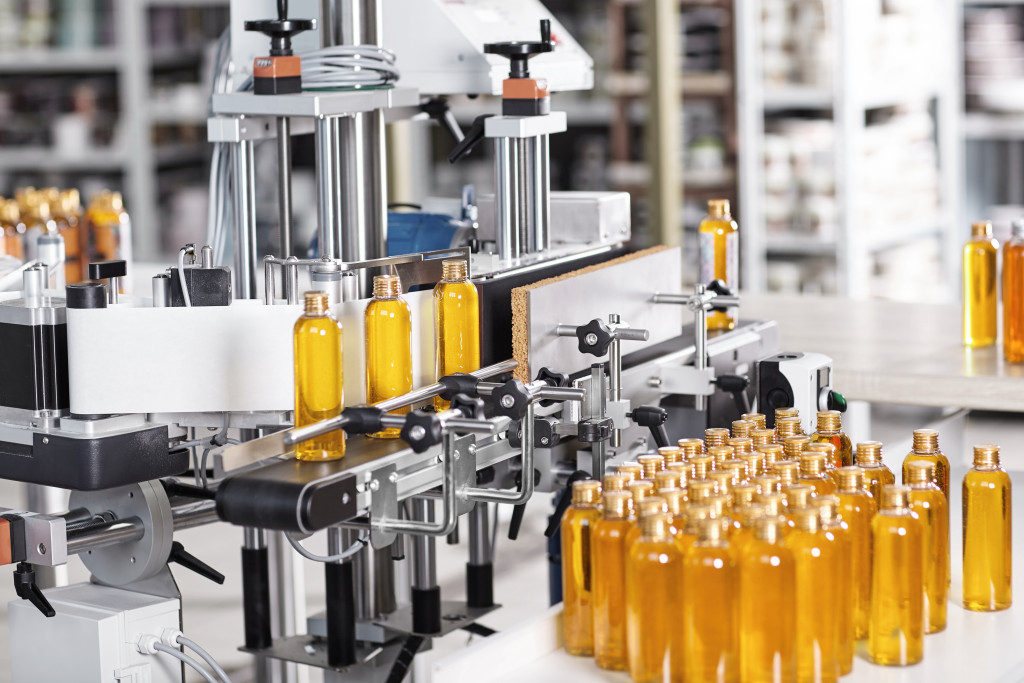- Comprehensive training and education is the foundation of any safety strategy.
- Proper storage and labeling are essential for ensuring chemical safety in the workplace.
- Regular equipment maintenance and inspection can help prevent accidents.
- Developing a comprehensive emergency response plan is critical for managing emergencies.
- Neutralizing solutions can help contain and mitigate the effects of chemical spills.
The workplace, especially those dealing with chemicals, can be a potential hotbed for accidents if not managed with extreme care and diligence. Chemicals, if mishandled, can result in devastating accidents, posing severe risks to workers’ health and safety. But with the right strategies, these risks can be minimized or entirely mitigated. Dive into these strategies to ensure chemical safety in your workplace.
1. Comprehensive Training and Education
Educating your workforce is the foundation of any safety strategy. A well-informed team is a safe team. Equip your employees with the necessary knowledge about the chemicals they handle. This involves understanding the properties, hazards, and the correct handling and storage procedures. Regular training sessions, workshops, and drills can ensure that the information remains fresh in their minds. Additionally, ensure they are trained in first-aid measures specific to chemical accidents.
2. Proper Storage and Labeling

Ensuring proper chemical storage conditions is not just organizing them neatly on shelves. Every chemical has its storage requirement, depending on its properties. Some chemicals may require temperature-controlled environments, while others may need to be kept away from light. Prioritize using clear and legible labels indicating the chemical’s name and potential hazards. Safety Data Sheets (SDS) should be easily accessible for every chemical stored.
3. Regular Equipment Maintenance and Inspection
The equipment used in handling chemicals plays a significant role in ensuring safety. Any malfunction or breakdown can lead to mishaps. Regularly inspect the equipment to ensure they are in perfect working condition. This includes checking pipes for leaks, ensuring safety valves function correctly, and checking storage tanks for potential wear and tear. Establish a routine maintenance schedule and stick to it diligently.
Here are some tips for effective regular equipment maintenance and inspection:
Develop a Comprehensive Checklist
Create a comprehensive checklist that includes every piece of equipment and all safety measures that must be inspected. This checklist should be thorough, covering every possible area that could pose a risk, from minor details like bolt tightness to major issues such as the structural integrity of the storage tanks. Ensure to update this checklist as new equipment is introduced or safety standards change.
Train Your Staff
Implement regular training sessions for your staff on properly inspecting and maintaining the equipment. This training should include theoretical knowledge about the possible risks and practical demonstrations on how to check for these risks. Staff members should be encouraged to report any discrepancies they find during their inspections to be addressed immediately.
Incorporate Preventative Maintenance
Preventative maintenance is always better than reactive maintenance. Predict potential issues before they become a problem. This could involve replacing parts with a high wear and tear rate before malfunctioning or performing regular software updates to keep digital equipment running smoothly. Incorporating preventative maintenance can save time, money, and most importantly, it can prevent accidents.
Document Everything
Every inspection, repair, and maintenance operation should be documented. This not only provides a record that can be referred back to if needed, but it also ensures accountability. If an accident occurs, these records can help identify what went wrong and how to prevent it. Documentation should be detailed, timely, and accurately reflect the condition of the equipment at the time of the inspection.
4. Emergency Preparedness and Response Plan

No matter how well you prepare, emergencies can still occur. Being prepared for such scenarios can make all the difference. Draft a comprehensive emergency response plan that outlines the steps to take in case of a chemical spill, leak, or any other mishap. This plan should be displayed prominently and be known to all employees. Equipping the workplace with emergency equipment such as eyewash stations, fire extinguishers, and showers is crucial. Regular drills can ensure that employees know the steps to take in case of an actual emergency.
5. Use of Neutralizing Solutions
When a chemical spill occurs, the immediate concern is containing and neutralizing the threat. Having a neutralizing solution on hand can be pivotal in managing chemical spills. These solutions can neutralize the hazardous effects of chemicals, rendering them harmless. Ensure that your workplace is stocked with the right neutralizing solutions for the chemicals you handle. Employees should be trained in the correct application methods, ensuring they can act swiftly and effectively during a spill.
Final Words
Workplace chemical safety is a continuous process, not a one-time event. Regular reviews, updates to safety protocols, and constant vigilance are essential to keeping the workplace safe. Incorporating these strategies into your safety regimen protects your employees and fosters a culture of safety and responsibility. Always remember a safe workplace is a productive workplace.
